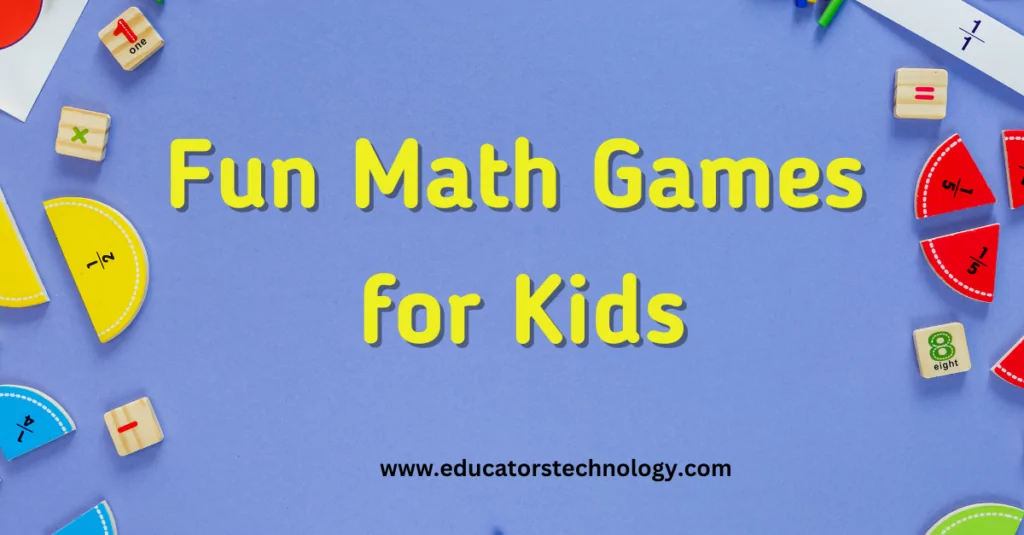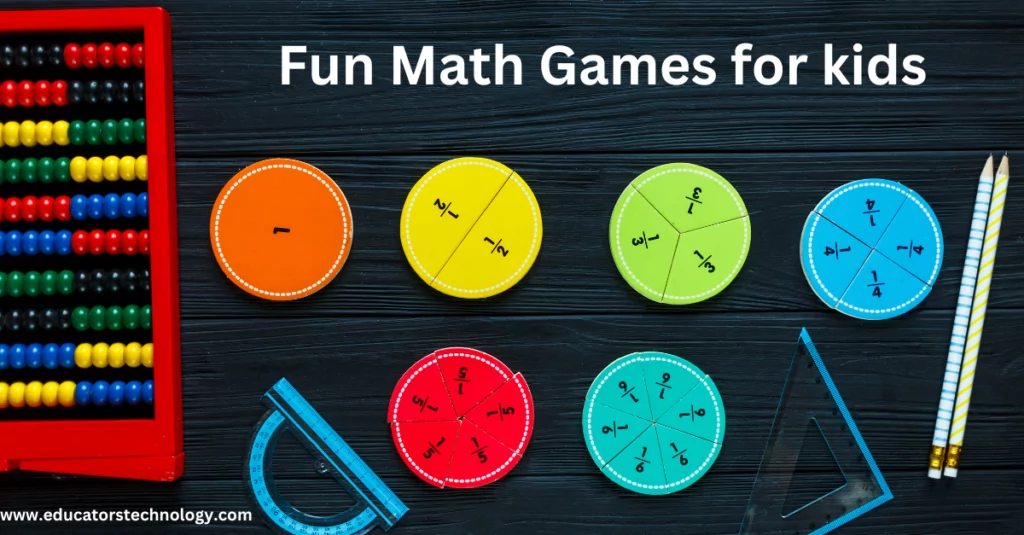Fun math games for kids is the topic of our blog post today!
I’ll admit, there was a time when the mere mention of the word ‘math’ would make me break out in a cold sweat. Despite being an EFL teacher for many years, not a mathematician, I have come to understand the transformative magic that math holds. Now, I’m eager to use my rich experience in educational blogging to provide you with practical resources that make math learning fun and engaging for kids. My purpose is to help you morph math from a seemingly rigid, intimidating subject into a thrilling universe brimming with puzzles that are eagerly waiting to be solved.

To this end, I did my research, scoured tons of online sources and consulted with fellow math teachers and came up with this list of best fun math games for kids. These are games that bring numbers to life, games that make math tangible and relevant, games that are – dare I say it – fun!
So whether you’re a parent seeking to make learning at home more enjoyable, or a teacher wanting to spice up your classroom activities, you’re in for a treat. Let’s embark on this numerical adventure together, shall we?
Related: Best Math Puzzles for students
Fun Math Games for Kids
Here are our top picks for fun math games for kids:
1. 101 and Out
In this game, players start at 0 and take turns to add a number from 1 to 10 to the total. The goal is to avoid being the person to make the total reach 101. This game is excellent for developing addition skills, strategic thinking, and forward planning.
2. Multiplication War
This game uses a deck of cards. Each player turns over two cards and multiplies the numbers together. The player with the highest product takes all the cards in that round. This game reinforces multiplication tables in an exciting, competitive format.
3. Fraction Bingo
Create bingo cards with different fractions and call out the decimal equivalent. The players need to match the decimal to the fraction on their bingo card. Fraction Bingo is a fun way for students to practice converting fractions to decimals and vice versa.
4. Egg Carton Shake Up
Using a 12-slot egg carton, place a small object (like a marble) in it. Have the child close it, shake it up, and then guess which number slot the object is in. This game is excellent for younger children who are learning to recognize numbers and begin with addition.
5. Place Value War
Similar to Multiplication War, in this game players turn over two or three cards and make the largest number they can. The player with the highest number takes the cards. This game is great for reinforcing understanding of place value and larger numbers.
6. Salute
This game requires three players. Two players stand back-to-back and each draw a card which they hold on their forehead (facing outwards). The third player tells them the sum (or product) of their two numbers.
Each player then has to figure out their number based on the total and the number they can see. Salute is excellent for developing addition and subtraction skills, or multiplication and division skills for older students.
7. Math Memory
Create cards with math problems on one card and the answer on another. Lay all cards face down and players take turns flipping over two cards, trying to find a match. This game can be adapted to a wide range of math skills and encourages both problem-solving and memory skills.
8. Math Tic Tac Toe
Just like tic tac toe, but each square has a number. To place their mark in a square, a player must correctly answer a math problem with that number as the answer. This game can be adapted for a wide range of math skills and encourages strategic thinking.
9. Skip Counting Chain
Create a paper chain where each link represents a skip count number (like 2s, 5s, or 10s). Kids add a new link each day and practice counting. This game helps kids practice skip counting, which lays the foundation for multiplication.
10. Roll and Race
This game requires two dice and a printout of a number line. Each player rolls two dice, adds or multiplies the numbers, and then moves their marker that many spaces on the number line. The first player to reach the end wins. This game is great for practicing addition or multiplication, and the concept of number lines.

11. Math Simon Says
Just like traditional Simon Says, but with a mathematical twist. The leader could say, “Simon says touch a number divisible by 2,” or “Simon says touch something that’s a square shape.” This game reinforces number recognition, understanding of number properties, and shape identification, all in a fun, active format.
12. Stand Up, Sit Down
In this game, the teacher calls out different conditions (for example, “If you’re wearing 5 blue items,” “If you have 2 siblings,” “If the sum of the digits in your age equals 10”), and kids stand up or sit down in response.
This game gets kids thinking about numbers in different contexts, including simple addition and number properties. It’s also great for active learning and group participation.
13. One-Meter Dash
Divide a one-meter stick into different fractions and have students race to assemble it correctly the fastest. Alternatively, you can give the students a specific fraction or decimal of the meter they have to measure out.
This game helps students understand fractions and decimals in a tangible way, reinforcing concepts of measurement and equivalency.
14. Math Jeopardy
Create a Jeopardy-style game with different math categories (for example, addition, subtraction, multiplication, division, fractions, geometry). Teams of students take turns choosing a category and a point value, and answering the corresponding problem.
This game can encompass a wide range of math skills, encouraging both problem-solving and teamwork. The competitive format keeps students engaged and motivated to practice their math skills.
15. Back-to-Back
In this game, two players stand back to back, each holding a different number of objects (like counters or blocks). A third person announces the total number of objects both players have. The players have to figure out how many objects the other person has based on the total and the number of objects they are holding.
Back-to-Back is great for developing subtraction skills and logical thinking. It’s a fun way to practice math skills while encouraging communication and teamwork.
Final Thoughts
While I may have started this journey as a wordsmith rather than a numbers person, I’ve come to see the powerful stories that math can tell. Each game we’ve explored is not just about solving problems or calculating sums, but about encouraging strategic thinking, cultivating problem-solving skills, fostering team play, and instilling a sense of achievement.
So whether you’re a parent looking for ways to support your child’s learning at home, a teacher seeking creative approaches to your math curriculum, or perhaps even a writer like me who’s ready to embrace the enchanting world of numbers, I hope this list inspires you.




